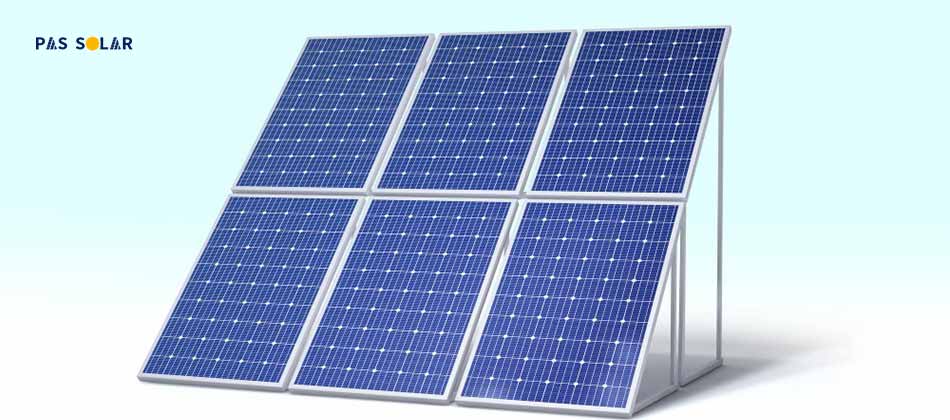Solar power is gaining momentum worldwide as more countries have begun transitioning to solar power as their primary energy source. The wide use of solar panels makes it necessary to learn how solar panel in Dubai work. As the cost of solar power has plummeted in recent years along with major improvements in technical efficiency and manufacturing quality, many US homeowners are beginning to look at solar power as a viable alternative energy. And as solar power enters major energy markets, the big question is, “how do solar panels work?” In this article, we will explain exactly how solar panels work for homes, and just how practical solar power can be.
How do solar panels work for your home? Step-by-step summary?
Solar panels work by absorbing sunlight with photovoltaic cells, generating direct current (DC) power, and then converting it into usable alternating current (AC) power with the help of inverter technology. That’s simply how solar panels work. AC power then flows through the home’s electrical panel and is distributed accordingly. Below are the basics of how solar panels for your homework:
- Solar panels receive energy from the sun and turn it into DC electricity
- The solar inverter converts DC electricity from your solar modules into AC electricity, which is used by most household appliances.
- Electricity runs through your home, powering home appliances
- Extra electricity generated by solar panels is returned to the electrical grid
How do residential solar panels work with the grid?
Although generating electricity with solar panels may make sense to most people, there is still a lot of general confusion about how solar panels work and how the grid influences home solar processing. Any home connected to the electrical grid will have a utility meter that your energy provider uses to measure and deliver power to your home. When you mount solar panels on the ground or on your roof, they ultimately link to your home’s utility meter. The power generation of your solar system can be monitored and measured by this.
Most homeowners have access to net metering. Net metering is a major incentive that remarkably enhances the motivation for using solar energy. If you have net metering, you can send power to the grid when your solar system is overproducing (such as during the day in the sunny summer months) in exchange for credits on your electric bill.
Then, during times of low electricity production (such as at night or on cloudy days), you can use your credits to draw additional power from the grid to meet your home’s electricity demand. In a sense, net metering offers a free storage option to households using solar power, making solar a viable power solution.
Considering that the most common aversion people have to solar power is the question of what to do at night or on days with bad weather, which stems from the lack of knowledge of how solar panels work.
A free storage solution as great as net metering is revolutionary in terms of solar technology. These types of incentives, plus the fact that the cost of solar energy has fallen by nearly 70 percent in the last decade, may explain why the solar industry is expanding dramatically in the United States.
How do solar panels for homework to generate power?
A typical solar panel (also known as a solar module) comprises a layer of a metal frame, silicon cells, a glass casing, and several cables to let current flow from the silicon cells. All these different components are necessary when you ask the question “how do home solar panels work?”. When discussing how a solar panel works to generate electricity, it’s necessary to know about the basic structure of a solar panel like the Canadian Solar Panels.
Silicon is the main element used in solar panels that can absorb and convert sunlight into electrical power. When light interacts with a silicon cell, it causes electrons to move, starting a flow of electrical current. The process of how solar panels work is known as the “photovoltaic effect” and describes the general functionality of solar panel technology.
The process of how solar panel works in home happens through the following steps:
- Silicon photovoltaic solar cell absorbs solar radiation
- When the rays from the sun hit the silicon cell, the electrons start to move, producing a flow of electrical current.
- The cables capture and feed this direct (DC) electricity to a solar inverter to convert it into alternating (AC) electricity.
Additional important parts of solar panels
Aside from its silicon solar cells, a typical solar module includes a glass casing that offers durability and protection for the silicon photovoltaic cells. Beneath the glass exterior, the panel has an insulation layer and a protective backsheet, which protects against heat dissipation and moisture inside the panel. Insulation is important because temperature increases will lead to decreased efficiency, resulting in lower solar panel performance.
This article aimed at explaining how solar panel works to generate electrical energy. The photovoltaic process is complicated and there are many details that we did not cover in this article. You may be left with many questions, but the good news is, we can consult you and answer all your questions at Pas Solar. All you need to do is to contact our solar inverter supplier in uae.





